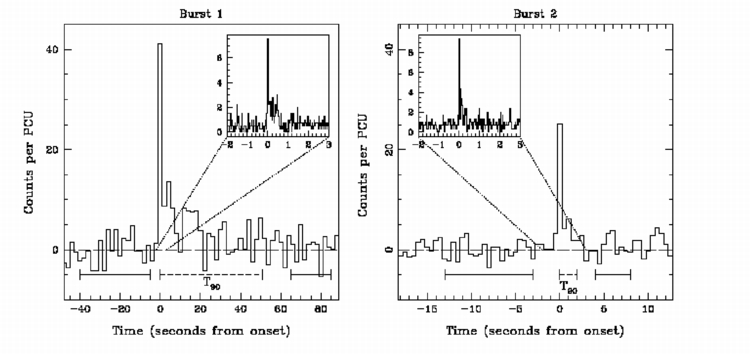
 Credit: Gavriil, Kaspi & Wood, 2002,
Nature, Vol 419, pg. 142
Credit: Gavriil, Kaspi & Wood, 2002,
Nature, Vol 419, pg. 142
The Magnetic Connection
Astronomers have identified many strange things in the universe, so if an
astronomer regards something as anomalous, it must really stand out. The class
of objects known as Anomalous X-ray Pulsars (or AXPs) are just these types of
objects. Anomalous X-ray Pulsars have gained their title since, unlike the
"usual" types of pulsars, these objects can't be powered by accretion of matter
from a companion, or by rotation. Astronomers have puzzled about the true nature
of these objects for many years. A new observation by the Rossi X-ray Timing
Explorer (RXTE) might have finally provided a breakthrough in this
"anomalous" case. This new
observation shows that one well-studied AXP undergoes X-ray bursts, similar
to the types of bursts seen in other compact objects known as Soft Gamma-Ray
Repeaters. Soft Gamma Ray repeaters are thought to be "magnetars", compact
neutron stars with extremely strong magnetic fields. Astronomers now suspect
that AXPs may be the progenitors of Soft Gamma-Ray Repeaters.
Last Week *
HEA Dictionary * Archive
* Search HEAPOW
* Education
Each week the HEASARC
brings you new, exciting and beautiful images from X-ray and Gamma ray
astronomy. Check back each week and be sure to check out the HEAPOW archive!
Page Author: Dr. Michael F. Corcoran
Last modified September 30, 2002


